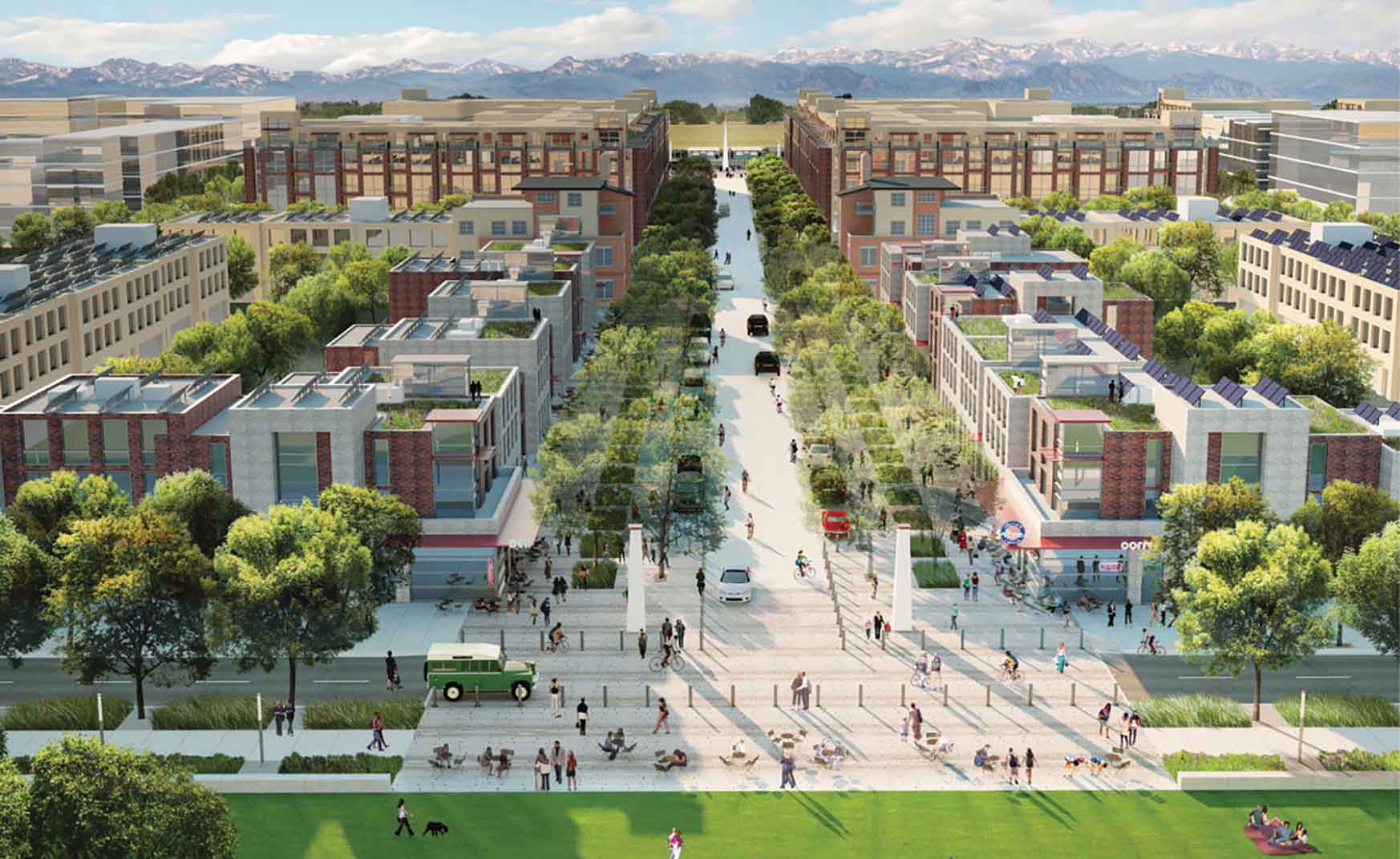NREL and Panasonic Develop a Zero-Energy, Transit-Oriented Campus
NREL and Panasonic are collaborating on a project to enable the least cost and most scalable net-zero energy infrastructure development in the U.S. The transit-oriented Peña Station NEXT district in Denver, Colorado, will feature the state's first microgrid on its zero-energy campus.

Rendering from LC Fulenwider Inc.
The team of development stakeholders includes NREL, Panasonic Enterprise Solutions Company, Xcel Energy, land developer L.C. Fulenwider, and the City and County of Denver through Denver International Airport.
NREL will develop foundational software that integrates building energy load modeling with distribution system modeling for the first time. The tool combines NREL's building energy system model, URBANopt, with grid modeling software, OpenDSS, to allow cities, land developers, and energy planners to join forces for comprehensive energy district design and planning.
NREL will model the interaction of the district with the grid under a variety of load and power flow scenarios using a range of technologies—including varied solar photovoltaic penetrations, energy efficiency scenarios, distributed energy storage capacities, and district heating and cooling. Xcel Energy will verify the feasibility of these distribution system models, and Panasonic will perform cost-benefit analyses.
Along with the creation of the Peña Station NEXT district, this project will result in several tools that others can use to replicate this project across the country, including an enhanced version of URBANopt, as well as a developer’s handbook created by Panasonic.
Share
Last Updated March 14, 2025
